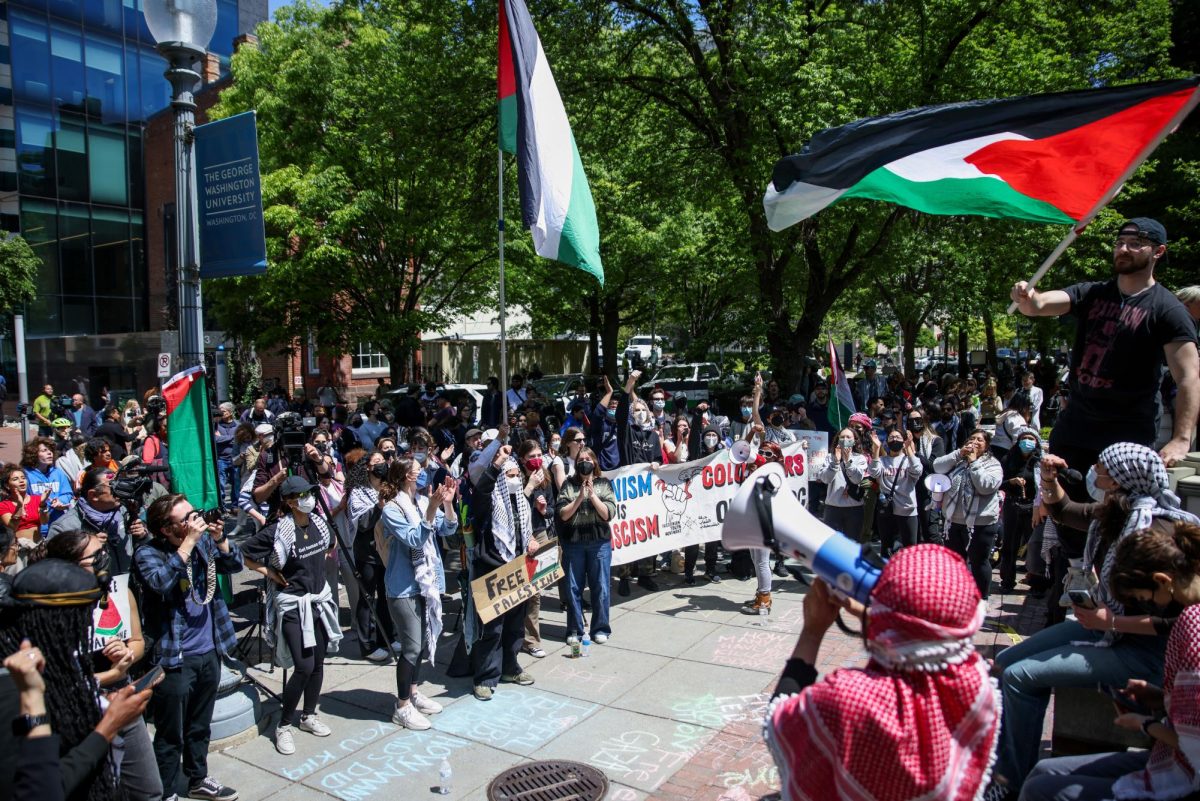The GW Hatchet continued its excellence with coverage of the University and Foggy Bottom throughout 1996 – a year famous both for its government shutdowns in the beginning and national elections in the end. Meanwhile, The Hatchet also continued its stellar coverage of the GW campus, providing readers with their only consistent access to the news that mattered most.
January: The Hatchet returned from its winter break to find the District blanketed with record snowfall. GW facilities crews worked around the clock to keep the University open. In addition, the paper delved into how the federal government struggles affected GW students – from interns on Capitol Hill to those wary of financial aid cutbacks. The new GWeekend section kicked off its first full semester by continuing to provide readers with the scoop on what to do, providing The Hatchet with color once a week in the process.
February: The second month brought with it the annual tuition increase, this one a 4.98 percent hike, bringing the cost of an undergraduate education for one year to $19,980. GW also announced that the journalism department, until then a part of the National Center for Communication Studies, would join the political communication and radio/television programs in the new School of Media and Public Affairs. “The name does a better job of capturing what we do,” Jarol Manheim, the school’s director, said at the time. The Hatchet also covered campus elections with vigor, conducting its first-ever polling for the presidential and vice presidential races. The polls accurately predicted the order of finish in both races.
March: The student elections concluded with The Hatchet publishing a special, eight-page Friday edition. In addition, the University announced the hiring of Carl Stern to teach journalism classes, including reporting and law of the press. The former director of public affairs for the U.S. Department of Justice gave the new School of Media and Public Affairs credibility as a professor with impeccable credentials.
Meanwhile, the men’s and women’s basketball teams returned to the NCAA Tournament, and The Hatchet was right there with them, sending reporters and photographers to Tempe, Ariz., and Blacksburg, Va.
April: The University got its hopes up but was ultimately disappointed when President Clinton declined the school’s invitation to speak at GW’s 175th anniversary Commencement. Some members of the Foggy Bottom community failed in their legal attempt to bar GW from building a new residence hall on the corner of 24th and H streets, N.W. The hall, scheduled to open in May 1997, still has not been named.
May: One year after rain canceled Commencement on The Ellipse, GW was blessed with sunny weather for graduation ceremonies. However, extreme heat forced 37 people to seek first aid. Two of the scheduled speakers were even unable to attend the ceremony because of health concerns.
June: GW prepared for the worst when it realized more freshmen than ever before were descending on campus for the 1996-97 school year. As many as 1,743 freshmen were expected at one point, more than 250 more than the school planned for. As a result, GW leased a luxury hotel on New Hampshire Avenue to house 114 freshmen.
July: The GW Hospital, continuing preparations for a potential sale, laid off 150 more workers. The layoffs, combined with the elimination of 150 unfilled positions, were an attempt to meet a shrinking budget and shrinking number of patients. Also, GW’s revenue jumped $74 million overall, according to Internal Revenue Service documents.
August: President Clinton visits the GW campus, delivering a national policy address at Lisner Auditorium. Also, the District government announced a plan to eliminate student reciprocity privileges for parking. The plan would force students to register their cars in the District and obtain D.C. drivers’ licenses in order to get parking stickers. Students raised concerns that changing their registration could threaten financial aid.
September: The new school year began with a bang as presidential candidate Ross Perot chose adjunct GW professor Pat Choate as his running mate. In addition, GW finally broke into the top 50 schools as ranked by U.S. News & World Report. The parking issue came to a head as the student government Senate attempted to fight the District Council, and The Hatchet obtained memoranda from the city’s lawyers that called into question the constitutionality of the parking bill.
October: The University wheeled and dealed throughout the month. GW entered an $80 million agreement to sell the hospital to OrNda Corp. It also bought Mt. Vernon College in northwest Washington in a move that increased the size of the University’s land by 50 percent overnight. Officials said they would try to maintain the all-girl’s school as an independent institution if possible.
November: The Hatchet covered the national elections from a GW angle with another special election edition. The paper covered everything from the presidential race to a student running for a seat on the Advisory Neighborhood Commission. A drop in graduate enrollment caused the University to prepare for future larger classes to make up for the lost revenue. Also, District Councilmember Jack Evans predicted the University’s hospital sale would face a fight from other health care corporations.







